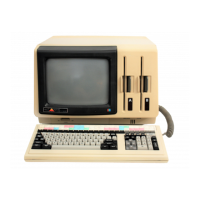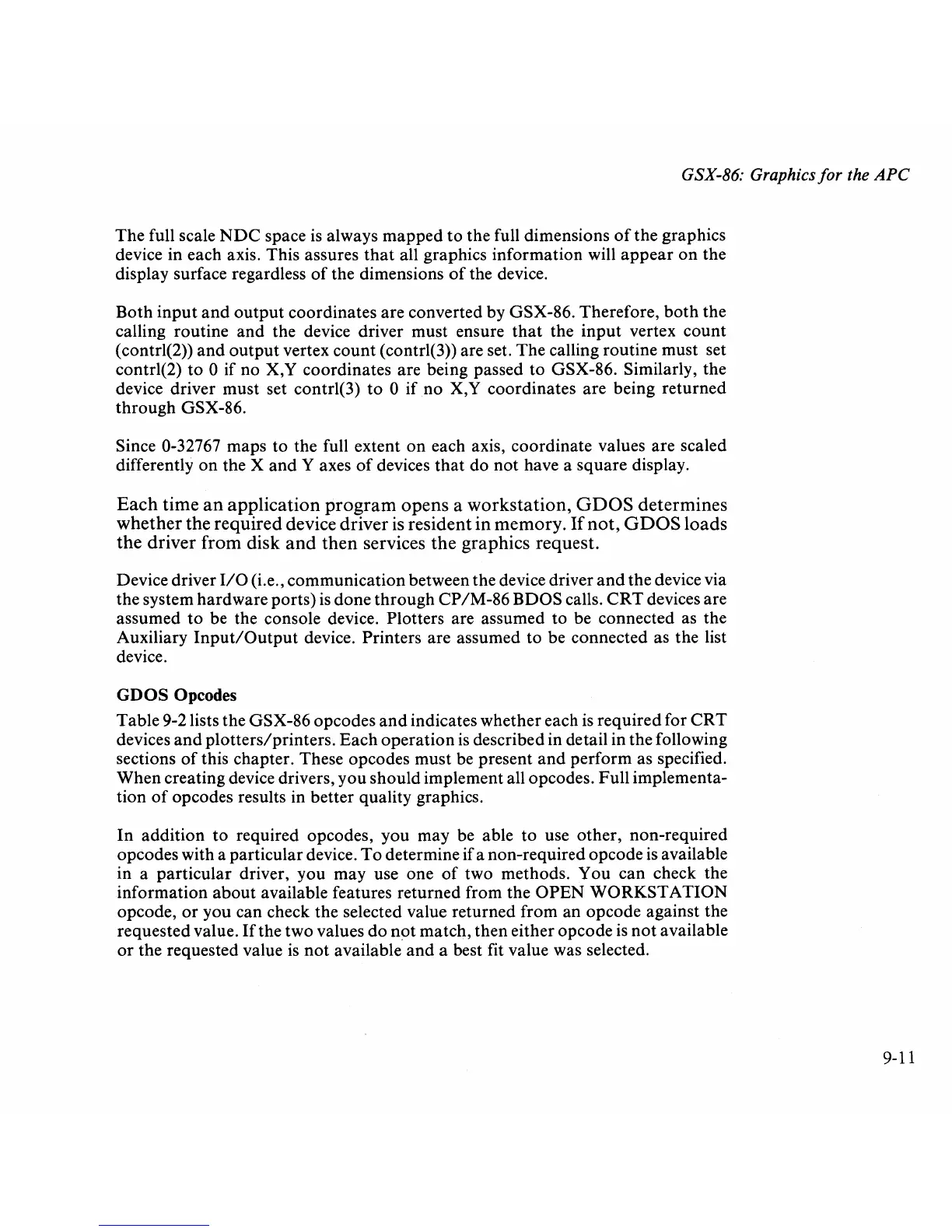GSX-86: Graphics
for
the
APe
The
full scale
NDC
space
is
always
mapped
to
the full dimensions
of
the
graphics
device in each axis. This assures
that
all graphics
information
will
appear
on
the
display surface regardless
of
the dimensions
of
the device.
Both
input
and
output
coordinates
are
converted by GSX-86. Therefore,
both
the
calling routine
and
the device driver must ensure
that
the
input
vertex
count
(contrl(2))
and
output
vertex
count
(contrl(3)) are set.
The
calling routine must set
contrl(2)
to
0 if
no
X,Y coordinates are being passed
to
GSX-86. Similarly, the
device driver must set contrl(3)
to
0
if
no
X,Y coordinates
are
being
returned
through
GSX-86.
Since
0-32767 maps
to
the full extent
on
each axis, coordinate values are scaled
differently
on
the X
and
Y axes
of
devices
that
do
not
have a
square
display.
Each time
an
application
program
opens a workstation,
GDOS
determines
whether the required device driver
is
resident in memory.
If
not, G
DOS
loads
the driver from disk
and
then services the graphics request.
Device driver
I/O
(i.e.,
communication
between the device driver
and
the device via
the system
hardware
ports)
is
done
through
CP/M-86
BDOS
calls.
CRT
devices are
assumed
to
be the console device. Plotters are assumed to be connected as the
Auxiliary
Input/Output
device. Printers
are
assumed to be connected as the list
device.
GDOS
Opcodes
Table 9-2 lists the GSX-86 opcodes
and
indicates
whether
each is
required
for
CRT
devices
and
plotters/printers.
Each
operation
is
described in detail in the following
sections
of
this chapter. These opcodes must be present
and
perform
as specified.
When
creating device drivers,
you
should
implement all opcodes.
Full
implementa-
tion
of
opcodes results in better quality graphics.
In
addition
to
required opcodes,
you
may be able
to
use
other,
non-required
opcodes with a particular device.
To
determine if a non-required opcode is available
in a
particular
driver,
you
may
use one
of
two methods.
You
can
check the
information
about
available features returned from the
OPEN
WORKSTATION
opcode,
or
you
can check the selected value
returned
from
an
opcode
against the
requested
value.
If
the
two
values
do
n9t
match,
then
either
opcode
is
not
available
or
the requested value
is
not
available
and
a best fit value was selected.
9-11

